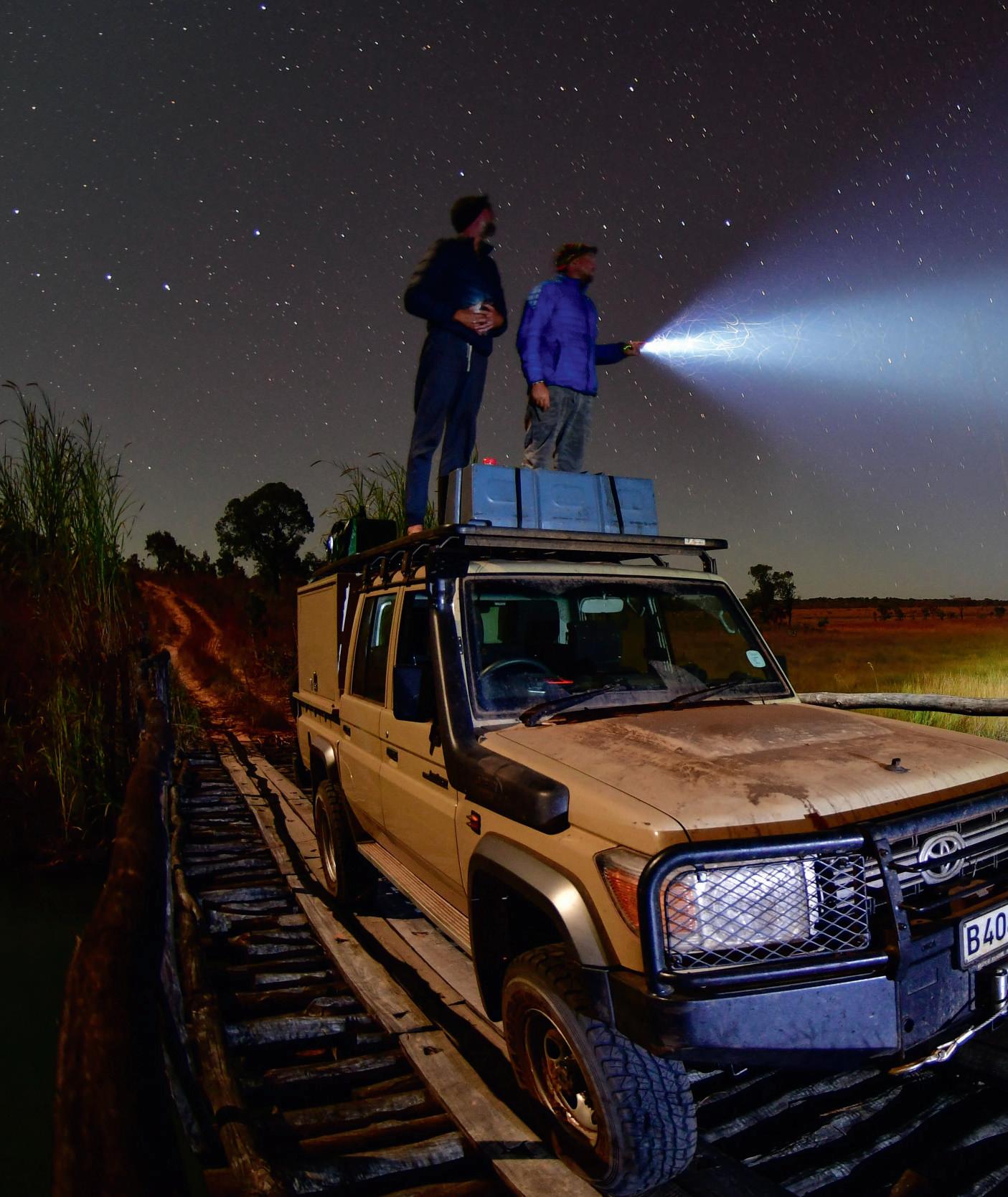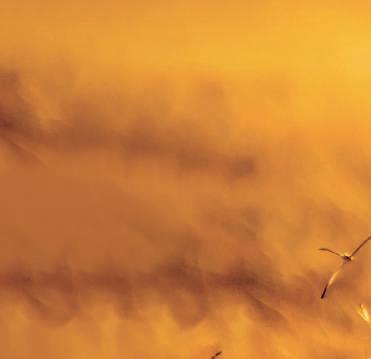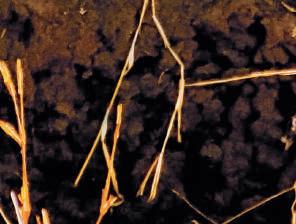
8 minute read
The National Geographic Difference



For 134 years, we’ve sent our explorers across continents and into remote cultures, down to the oceans’ depths, and up the highest mountains in an effort to better understand the world and our relationship to it. National Geographic Expeditions grew from this legacy as a way to invite others to explore—to encounter the wonders of the world up close and in depth, and to be transformed by the experience.


When you travel with National Geographic Expeditions, you gain access to fascinating people and places all over the globe. You’re enriched by the knowledge of our experts and guides, and by the local experts you meet along the way. And you give back. By traveling with us, you help further the work of our explorers.


That is the National Geographic difference.



| KNOWLEDGE |
EXPLORE WITH OUR EXPERTS
Deepen your understanding of the world when you travel with us. From the scientists, photographers, and explorers who accompany our trips to the local guides and experts we meet in the field, you'll be surrounded by people who are steeped in knowledge and insight about the places we visit.
LUKE DOLLAR Wildlife biologist and 2007 National Geographic Emerging Explorer Luke Dollar coordinates conservation and research programs focused on protecting carnivores and their habitats. He has conducted extensive research in Madagascar and manages the National Geographic Society’s Big Cats Initiative, which has funded more than 65 field programs worldwide. He is a professor of biology at Pfeiffer University and an adjunct professor at Duke University’s Nicholas School of the Environment.
Travel with Luke on our Cultural Wonders of Africa: A Journey by Private Jet (see page 128).
SYLVIA EARLE National Geographic Explorer at Large Sylvia Earle is an oceanographer who was named one of Time magazine's "Heroes for the Planet." She has pioneered research on marine ecosystems, with a focus on exploration, conservation, and the development of new technology for accessing the deep sea. She is former chief scientist for the National Oceanic and Atmospheric Administration and founder of SEAlliance, which partnered with National Geographic on the Mission Blue initiative to help restore ocean health.
Explore with Sylvia on our Galápagos Voyage expedition (see page 80).
KRITHIKA VARAGUR Krithika Varagur is an award-winning American journalist and a 2019 National Geographic Explorer. She has gone on pilgrimage with Albanian Sufis, circled the U.S. by train as an Amtrak Writer-in-Residence, dog-sledded above the Arctic Circle, and retraced the footsteps of Victorian naturalist Alfred Russel Wallace through Indonesia to investigate the modern-day wild bird trade. She has written several books and published stories widely. She was named 2020 Foreign Correspondent of the Year by the Newswomen’s Club of New York.
Join Krithika on our Borneo Wildlife Adventure (see page 47).
NATIONAL GEOGRAPHIC EXPLORER SYLVIA EARLE



Afloat in the ocean depths, National Geographic Explorer at Large Sylvia Earle shares a find with an engineer in a research vessel.

In Antarctica, a gentoo penguin fins through the icy shallows where the National Geographic Explorer is anchored.

| ACCESS |
GET CLOSER THAN YOU’VE EVER IMAGINED
We open doors around the globe, so that you can go behind the scenes to get a close-up view of the world’s treasures and the work National Geographic is doing to help protect them.
Gather for a talk about the important fieldwork being done at Costa Rica’s Monteverde Institute, and its long relationship with National Geographic, then tend native plants at the nursery or pitch in with reforestation efforts (see page 14).
Explore remote polar regions aboard a state-of-the-art icebreaker with a world-class team of experts, venturing to places few others have been, and using an array of exploration tools to experience wildlife and spectacular ice-sculpted landscapes up close (see page 102).
Meet with a venerated elder in Ouidah, Benin to learn about everyday life and gain insights into the often-misunderstood vodun, (voodoo) religion that is widely practiced in West Africa. Witness a traditional vodun dance, then venture into a Sacred Forest to see vodun temples and statues and hear local legends (see page 128).
Researchers from the Okavango Wilderness Project team survey nocturnal wildlife on Angola’s Cuando River.


| GIVE BACK |

EXPLORATION HAPPENS BECAUSE OF YOU

When you travel with us, you help further the work of the National Geographic Society. Every year, we distribute a portion of our proceeds to the Society, a global nonprofit that invests in an international community of National Geographic Explorers—leading scientists, educators, storytellers, conservationists, technologists, and more. These changemakers explore the critical challenges of our time, discover new knowledge, advance innovative solutions, and inspire positive change. Take a look below at some of the projects we’ve supported that are helping illuminate and protect the wonders of our world. To learn more, visit natgeo.com/impact.


The National Geographic Okavango Wilderness Project, spearheaded by National Geographic Explorer Steve Boyes, has surveyed the entire Okavango watershed— spanning four countries—in order to ensure permanent protection for the waterways that feed the Okavango Delta, its wildlife and its people.


Led by National Geographic Explorer David Gruber, Project CETI is an interdisciplinary research initiative that aims to apply advanced machine learning and state-of-the-artinvasive robotics to listen to and translate the communication of sperm whales.

The Out of Eden Walk is a journalism project led by National Geographic Explorer Paul Salopek that aims to report on the major stories of our time by slowing down and retracing the pathways of human origins from Africa to South America.




SIGNATURE LAND | |






Get immersed in fascinating places, whether you’re exploring an archaeological site, riding a legendary railway, or hiking through incredible landscapes. Accompanied by a National Geographic Expert, these trips are designed for groups of up to 25 travelers and celebrate many facets of a destination: its history, art, cuisine, and natural heritage— to name just a few. Swoop over mountain passes on a train journey across the Swiss and Italian Alps, or go on safari with a wildlife biologist in Tanzania’s national parks. Delve into vibrant cultures in Japan or Morocco, or hike the most beautiful stretches of Spain’s Camino de Santiago. You’ll enjoy special access to people and places, meals in memorable settings, and carefully chosen accommodations that reflect the character of your destination.
INSIDE JAPAN
PAGE 51 THE SILK ROAD: DISCOVERING THE FIVE 'STANS OF CENTRAL ASIA
PAGE 46









• A wide variety of daily activities and excursions that allow you to explore your destination in depth
• Enriching talks and presentations by your
National Geographic Expert as well as local experts
• Outstanding accommodations selected for their location, character, and high level of service
• All breakfasts and select lunches and dinners, including specially arranged meals with local entertainment
• A staff of seasoned, English-speaking professionals
• Airport transfers upon arrival and departure and transportation during your trip
• Entrance fees and local taxes
• All gratuities except for Expedition Leader




EXPLORING PATAGONIA
PAGE 16 EXPERT SPOTLIGHT
Chloé Capel, Archaeologist
Chloé Capel specializes in the medieval history of northern and western Africa. She has been a lecturer in Islamic Arts at Paris’s École du Louvre for ten years and has taken part in archaeological expeditions in Egypt, Mauritania, Ethiopia, and Niger. Chloé currently works in Morocco, where she is excavating the caravan city of Sijilmassa and co-directing the dig at Aghmat.











